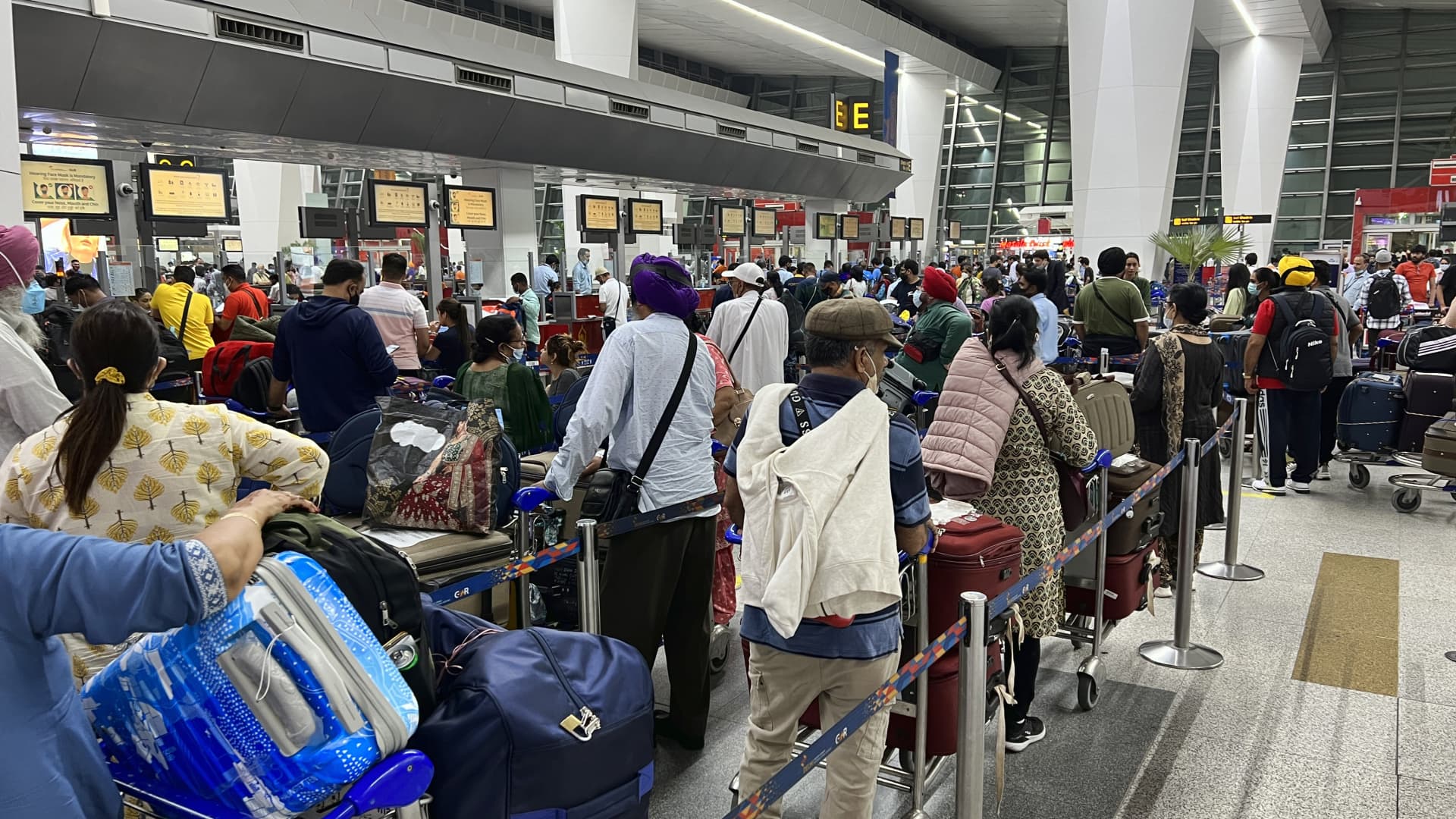India’s airline industry may be on a strong growth trajectory — but don’t expect India’s outbound travel to overtake China’s soon, aviation analysts say.
Travel demand to and from India is expected to grow as the country’s middle class expands and more residents travel abroad for the first time, Brendan Sobie, independent analyst at Sobie Aviation said. But “don’t expect India to be a bigger outbound market than China anytime soon.”
The South Asian nation may be set to overtake China as the world’s most populous country, but there remains a “massive gap” between their aviation markets, Sobie said.
“The gap between China and India is huge,” Lalitya Dhavala, valuations consultant at travel analytics firm Cirium told CNBC.
Although India has the world’s third largest aviation market, “China’s total fleet is almost five times the existing Indian fleet, for an almost equal population,” she said, highlighting it was “indicating room for expansion.”
In addition, only 7.3% of India’s current population holds a passport, Dhavala highlighted.
India’s robust growth trajectory
The analysts agree there’s potential for growth in India’s domestic and international travel market.
In comparison to China, India has a larger share of young adults, with 40% of its population under 25 years old, Dhavala said. “This generation is on a rising economic trajectory with a growing desire and appetite to travel and explore the world.”
According to data from Statista, those under 29 years of age made up 34.12% of China’s population in 2021.
China has a rapidly rising aging population. Only 7% of India’s population this year comprised of adults 65 years and older, compared with 14% in China, data from the Pew Research Center showed.
With more women entering the workforce, a dual-income household would also give families more discretionary spending power, she added.
“India is going to become one of those key pillars of global aviation, and the next few years … is India’s story as much as anyone’s,” Air India CEO Campbell Wilson told CNBC this week when asked if India’s travel industry could potentially overtake China’s.
Shot in the arm for infrastructure
Prime Minister Narendra Modi’s government said it will be spending $12 billion by 2025 to boost regional connectivity by building new airports and renovating existing ones, Reuters has reported.
On Monday, the government announced more infrastructure investments for the aviation sector: to increase the number of airports, carriers, and staff to keep up with the travel demand to and from India which picked up rapidly after the pandemic eased.
“Without infrastructure investments the risk is there would be a demand for more flights but not enough infrastructure to handle the flights, particularly in major cities,” Sobie said.
The country’s aviation sector is “entering its growth phase,” said Civil Aviation Minister Jyotiraditya Scindia. “We need to put in place the civil aviation infrastructure and capabilities [so] that by 2047, we will be able to support a $20 trillion dollar economy within India.”
“At one point, we did not have passengers to fill up [the] airlines due to Covid. Now, we don’t have enough airplanes to fly our passengers,” Scindia said during the CAPA India Aviation Summit in New Delhi at the start of the week.
India, the world’s fastest-growing economy according to the World Economic Forum, welcomed 410,000 passengers daily in 2019 before Covid hit — but that has reached new highs of 456,000 passengers in recent months, Scindia claimed.
Even though the peak season in October has passed, he said airports are still welcoming between 420,000 to 440,000 passengers daily.
Scindia added that passenger capacity at the country’s six major airports is expected to grow to 420 million in four years from the current 192 million.
Looking beyond India’s borders
In expectation of an influx of passengers in the coming year, both domestically and internationally, national carrier Air India announced in February that it will be buying 470 Boeing and Airbus aircraft — a decision Scindia called the “largest order in international civil aviation history.”
Late last year, Indian conglomerate Tata Group announced that Vistara will merge with national carrier Air India by March 2024. Vistara is a joint venture between Tata Sons and Singapore Airlines. After the merger, SIA will own 25.1% of Air India.
“The opportunity for Indian aviation is massive … the growth opportunity is very, very real,” Air India’s Wilson said Monday, adding that India’s flag carrier is focused on growing internationally to catch up with its competitors.
Indian airlines are still largely focused on their domestic operations, with only 8% of major airlines’ offering international routes, said Dhavala from Cirium.
But she said she’s optimistic the government is set look beyond its borders as the country aims to become a “regional hub rather than [having flights] funneling through Middle East or Europe.”
The total fleet by Indian carriers is expected to double in the next five to 10 years, which translates to 15% growth rate over the next 8 years, Dhavala noted.
“If we can offer a nonstop proposition that is of great quality, great service, [and flies] nonstop into the places where Indian travelers or people traveling to India want to go, the opportunity is many fold bigger than has been apparent in the past,” Wilson said.
Correction: This story has been updated to accurately reflect that China has a rapidly rising aging population. The mistake was due to an editing error.
